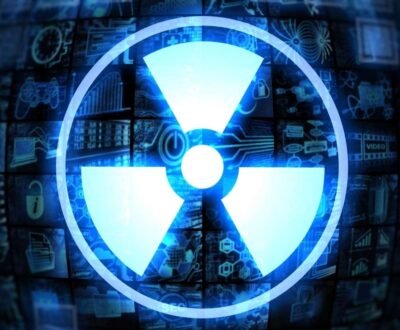A Positron emission tomography or PET scan is a nuclear medicine imaging technique which can give a representative image of the metabolism and circulation of elements within the organs of the body. By analyzing the images obtained by this non-invasive technique, doctors can detect and treat many types of cancers, heart disorders, brain dysfunctions, and various other ailments. PET is used both in treatment as well as in research. Unlike conventional CT or MRI scans which study the body’s anatomic changes, PET scans detect changes in molecular chemistry which is a precursor and cause of many diseases.

A patient undergoing a PET scan has to be injected with a radioactive tracer isotope. A Radioactive tracer or Radiopharmaceutical is usually a biologically active molecule such as fluorodeoxyglucose(FDG), which undergoes positron decay and emits gamma rays. The Radiotracer is either injected into the blood, inhaled, or swallowed. The material slowly collects at the required body part
The PET scan machine is similar to the MRI and CT machines, which has a cavity in its centre, where the patient to be scanned lies down. Radioactivity detectors or Gamma cameras are placed around this cavity in rings in order to detect the position and strength of the gamma rays emitted by the tracer molecule. The information is analyzed by a computer to produce actual images of metabolism in the targeted organs. PET scanning can also be superimposed with CT or MRI scans to produce images of high detail through image fusion. Correlation of these scans simultaneously helps doctors in making more accurate diagnoses.
Unlike other scanning techniques, PET scan directly shows the metabolic activity in cells. Areas of high chemical activity correspond to greater radioactivity by the isotope and vice versa. Thus, measuring the strength of radioactivity gives a direct indication of the metabolism of the cells in real time. Thus a PET scan is especially effective for organs which have moving parts or intense chemical activity such as the heart, lungs, brain, etc. PET scan can show the functioning of the organs at the same instant. Thus, they can be used for the detection of heart disorders.
The PET scan does not require normal patients to undergo special preparations. Patients must not drink calorie rich foods or liquids for a few hours before the scan , but are told instead to drink water. Depending upon the type of scan, you are allowed to wear full clothing or up to the waist. Patients must also remove metal objects such as spectacles, jewelry, piercing, and dental work prior to the exam. Women who are pregnant or breastfeeding are given special attention during the scan. Patients must also inform the doctor of recent illnesses, medication taken, allergies, etc. Blood sugar levels of diabetic patients must be checked before and after the scan for accurate results. Patients must lie still during the scan for accurate imaging. Claustrophobic patients must be given special attention as they may find it difficult to adjust in the confined scanning cavity of the machine.
PET scans can take up to three hours depending upon the body part being examined and the need for additional tests. In case of heart disorders, PET scans may be performed before and after an exercise routine or an intravenous medication.The radiotracer injected in the body for the scan will pass out of the body through stool or urine following the test. Patients are advised to consume lots of water during this period. Positron emission Tomography scanning is an invaluable diagnostic tool in modern medicine. It provides accurate information of the targeted body part as well as details which are not detected by conventional tests. The procedure identifies changes in the body at the cellular level, thereby predicting the onset of a disease at an earlier stage. PET scans use only small, accepted amounts of radiotracers which pose low radiation risk to the patient. Similar nuclear medicine procedures have been tried , tested and found safe for patients without any after effects.
However, rare cases of allergic reactions due to the scan have been seen. It also demands special precautions for pregnant women and diabetic patients. This is why it is important that the doctor must be well informed of the patient’s condition before conducting the test. PET scans may also be time consuming and yield relatively less accurate information as compared to CT or MRI scans. But, it is more sensitive than many techniques when it comes to monitoring the chemical activity in the body. In cardiology this method is hardly used, also the cost is very high.
About us and this blog
We are a teleradiology service provider with a focus on helping our customers to repor their radiology studies. This blog brings you information about latest happenings in the medical radiology technology and practices.
Request a free quote
We offer professional teleradiology services that help hospitals and imaging centers to report their radiology cases on time with atmost quality.
Subscribe to our newsletter!
More from our blog
See all postsRecent Posts
- Understanding the Challenges of Teleradiology in India January 19, 2023
- Benefits of Teleradiology for Medical Practices January 16, 2023
- Digital Transformation of Radiology January 2, 2023









